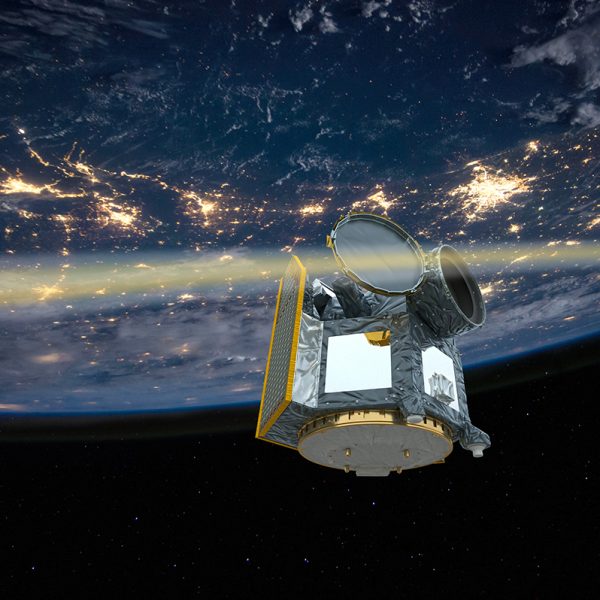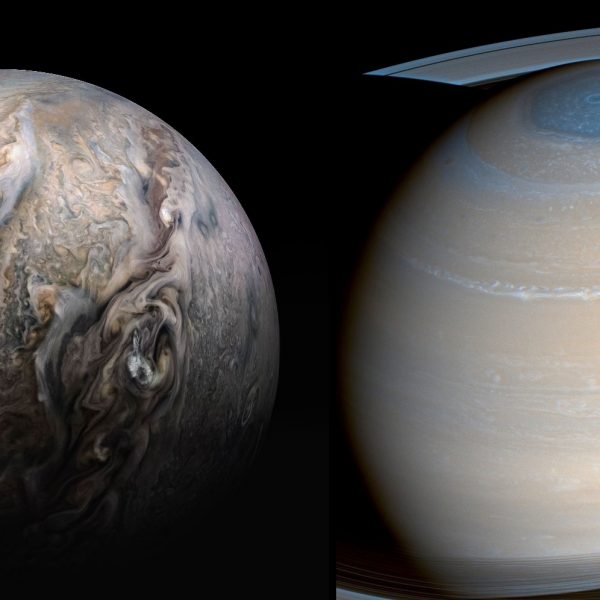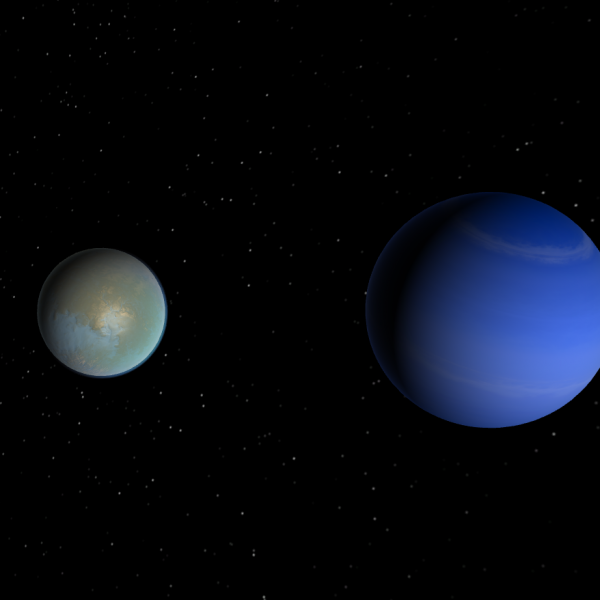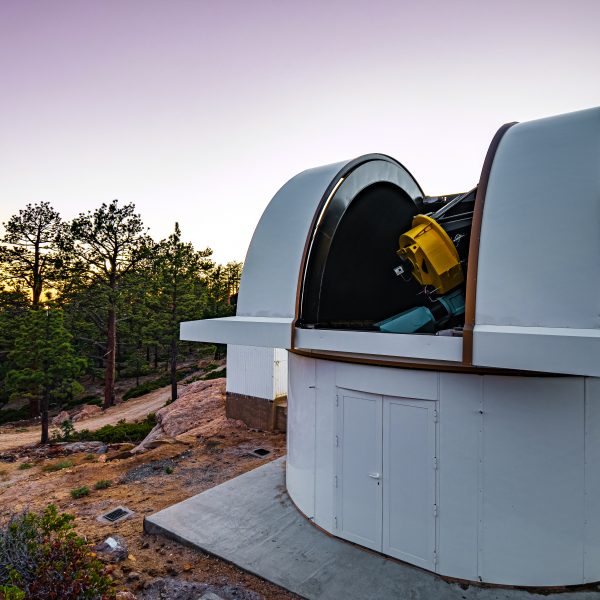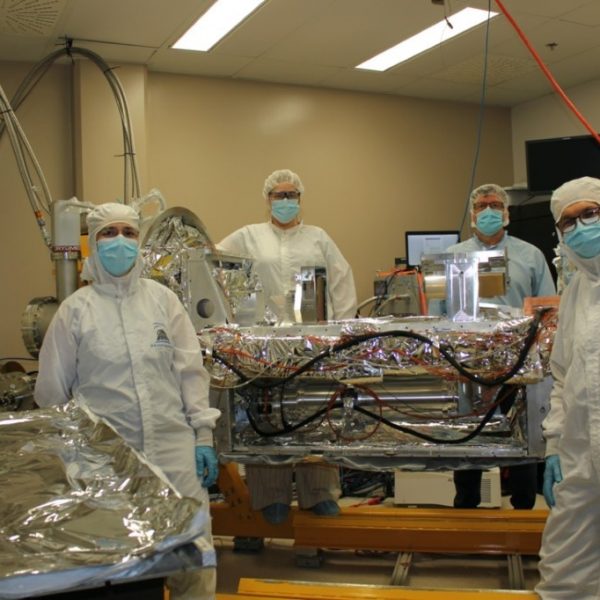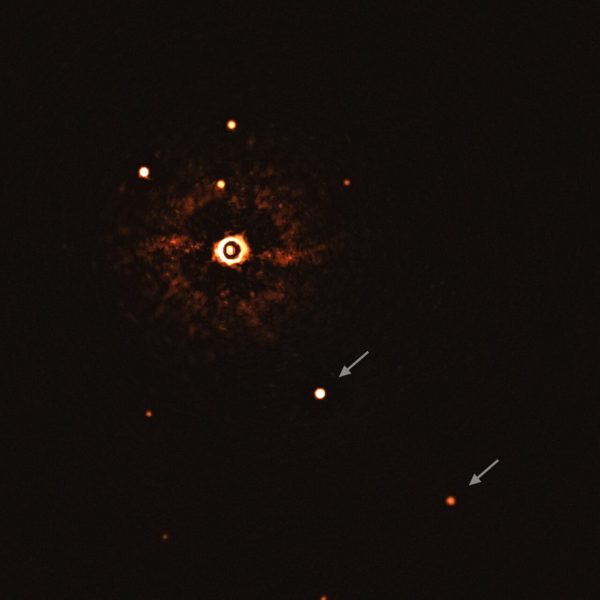News
What exoplanets have to do with the coronavirus
Astrophysicist Kevin Heng and epidemiologist Christian Althaus have just published a joint study. In an interview with “uniaktuell”, the two researchers explain what the spread of infectious diseases such as COVID-19 has to do with exoplanetary chemistry and what they hope to gain from INPUT, a newly founded interfaculty platform. By Brigit Bucher Astrophysics and […]
Continue ReadingCHEOPS had to avoid space debris
Space debris increasingly threatens rockets, the international space station and satellites. At the beginning of October, the CHEOPS space telescope had to make an evasive manoeuvre due to a piece of Chinese space debris. Such approaches can be extremely dangerous, because objects in Earth orbit shoot through space at many times the speed of a […]
Continue ReadingHow giant planets turn gas to metal
New theoretical insights and space mission data have changed our perception of the Solar system’s largest planets. Scientists from the University of Zurich, involved in the National Centre of Competence in Research PlanetS, have reviewed our current state of knowledge. Earth is a terrestrial planet. It consists of a mostly solid rocky crust and molten […]
Continue ReadingHow water explains missing planets
Space exploration telescopes have revealed that planets between the size of 1.3 and 2.4 Earth radii seem to be c comparatively rare. Scientists under the lead of the International Space Science Institute and the National Centre of Competence PlanetS have found a remarkably simple explanation. Since 1995, scientists have found over 4000 planets outside the […]
Continue ReadingMSc project – Laboratory simulations of the influence of interior composition on exoplanetary atmospheres
Original Content – https://sirop.org/app/7496d233-5832-4519-9367-1617972b92c7 Observations of exoplanet atmospheres provide information as to their composition. In order to link these signatures to their interiors, this project employs high temperature/high pressure experiments to determine the likely compositions of their mantles and atmospheres formed from their evaporation Keywords: Exoplanet, interior, evaporation, atmosphere, experiment, high temperature, high pressure, mantle, […]
Continue ReadingTwo planets around a red dwarf
The “SAINT-EX” Observatory, led by scientists from the National Centre of Competence in Research NCCR PlanetS of the University of Bern and the University of Geneva, has detected two exoplanets orbiting the star TOI-1266. The Mexico-based telescope thus demonstrates its high precision and takes an important step in the quest of finding potentially habitable worlds. […]
Continue ReadingNIRPS spectrograph delivers its first images in Quebec
The NIRPS spectrograph optical components has been successfully integrated and aligned into its cryogenic vacuum chamber and delivered its first images in August in the Université Laval’s laboratory. This is an important step before the instrument being installed on the 3.6-m ESO telescope in La Silla, Chile and joining the well-known high-resolution spectrograph HARPS to […]
Continue ReadingPhD position – Dynamics and evolution of small bodies in the Solar System
Call for 1 PhD position: Dynamics and evolution of small bodies in the Solar System The position is fully funded by the Swiss National Science Foundation (SNSF) for a 4 year duration, in the frame of an Ambizione Project. The successful candidate will conduct the research work under the supervision of Dr. Fabio Ferrari and […]
Continue ReadingFirst picture of a planetary system around a Sun-like star
Out of the 4300 exoplanets that have been detected to date, only a few dozen have been detected thanks to direct imaging, i.e. we have been able to physically see a planet around its star in an image. Indeed the star is so bright compared to the planets that it is necessary to use indirect […]
Continue ReadingResearch and innovation know no borders
International cooperation is of the utmost importance to the University of Bern, principal Christian Leumann emphasised during the visit of a high-ranking German delegation on 1 September as part of an information trip at the invitation of Präsenz Schweiz. The University of Berne used a number of current examples to show that top-level research today is […]
Continue Reading

